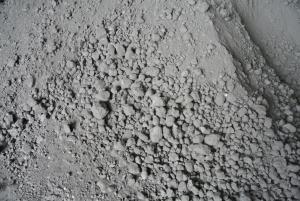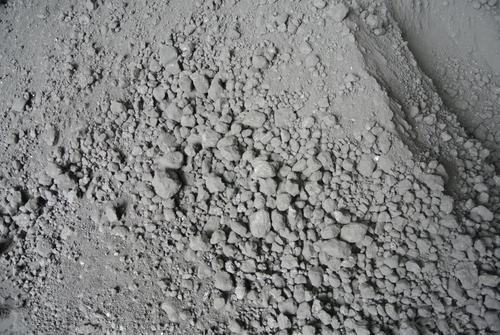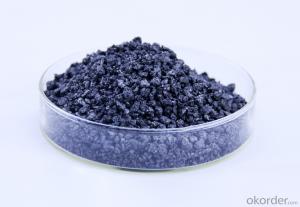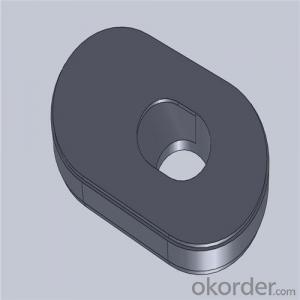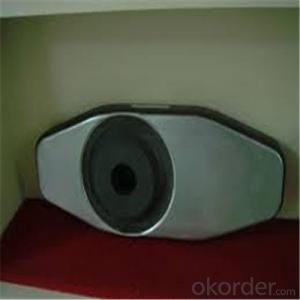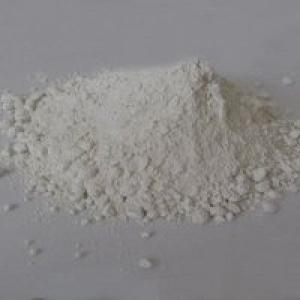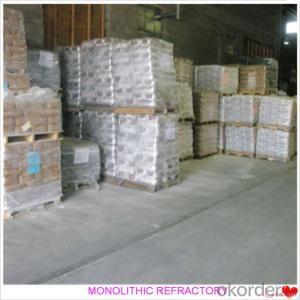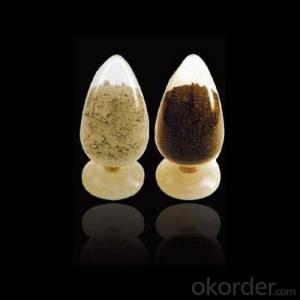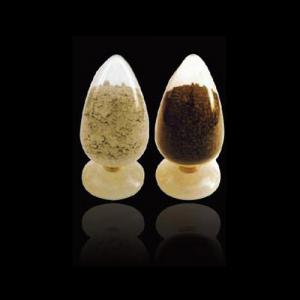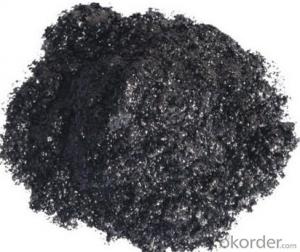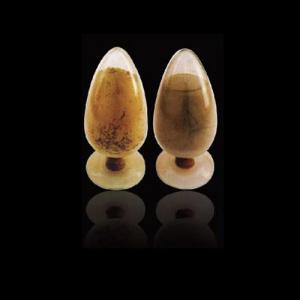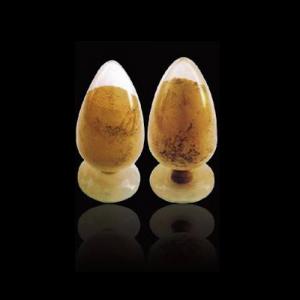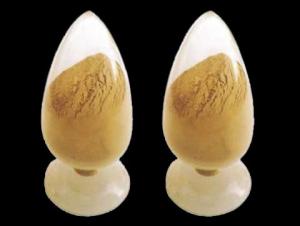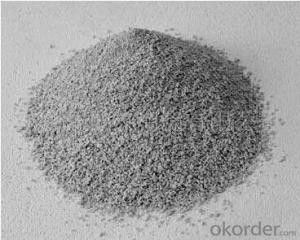Monolithic Refractories for Iron and Steel Industry - Silicon Nitride Bonded Silicon Carbide Products - Rammed
- Loading Port:
- Qingdao
- Payment Terms:
- TT OR LC
- Min Order Qty:
- 5 m.t.
- Supply Capability:
- 500 m.t./month
OKorder Service Pledge
OKorder Financial Service
You Might Also Like
Annual supply: Our company has passed ISO9001 quality management system certification and SGS certification. And the annual supply of shaped and unshaped refractory product is 28, 800-35, 000 tons.
Annual exports: Now we have gained a global sales network reaching Taiwan, Russia, Mongolia, South Korea, Vietnam, Pakistan, Bulgaria, Finland, Greece, Spain, Congo, Angola, South Africa, and Maldives, Jordan and so on. The export figure is more than USD 4 million.
Production equipment: Production and testing equipments are new, complete and automated or semi- automated. Such modern facilities and equipments have provided the fine technical guarantee for the production and testing.
Testing equipment: Our company's testing equipments as follows: High Temperature RUL TesterBulk Density TesterThe Pressure
Strong professional: Our company has thirty years producing experience in refractory product. Our manager will supervise on a various refractory' s production materials, process control, quality supervision and package delivery, and ensure the products are 100% qualified.
- Q: How do monolithic refractories impact the quality of iron and steel products?
- The quality of iron and steel products is greatly influenced by monolithic refractories. These refractories are extensively used in the lining of furnaces and other high-temperature environments where iron and steel undergo processing. To begin with, monolithic refractories play a vital role in insulating and safeguarding the furnace lining from the intense heat generated during the manufacturing of iron and steel. By maintaining the desired temperature, these refractories ensure consistent and proper heating of the metal, thereby achieving the desired product quality. Inadequate insulation would result in significant heat loss, leading to inefficient energy consumption and inconsistent product quality. Additionally, monolithic refractories have a significant impact on the overall cleanliness of iron and steel. During the production process, impurities and slag are formed, which can contaminate the metal if not managed properly. Refractories with high resistance to slag penetration and corrosion prevent these impurities from infiltrating the metal, ensuring a cleaner and purer final product. Moreover, monolithic refractories also contribute to the mechanical strength and durability of the furnace lining. The lining must withstand the harsh conditions and repeated thermal shocks encountered during the production process of iron and steel. A sturdy and well-designed refractory lining can resist cracking, spalling, and erosion, thereby prolonging the furnace's lifespan and reducing the risk of downtime. In conclusion, monolithic refractories have a profound impact on the quality of iron and steel products. They provide thermal insulation, prevent contamination, and ensure the mechanical integrity of the furnace lining. Manufacturers can optimize their production processes, enhance product quality, and improve overall operational efficiency by selecting the appropriate refractory material and maintaining it correctly.
- Q: How do monolithic refractories withstand the chemical attacks in aluminum furnace applications?
- Monolithic refractories withstand chemical attacks in aluminum furnace applications due to their high resistance to oxidation and corrosion. They are specifically designed to withstand the harsh environment of aluminum processing, which involves exposure to molten aluminum, alkaline fluxes, and other corrosive chemicals. Monolithic refractories have excellent chemical stability, low porosity, and high thermal shock resistance, which allows them to maintain their structural integrity and protect the furnace lining from chemical erosion. Additionally, these refractories often contain additives such as antioxidants and anti-corrosion agents that further enhance their resistance to chemical attacks in aluminum furnace applications.
- Q: How do monolithic refractories contribute to the overall efficiency of ladle slagging operations?
- Monolithic refractories play a vital role in enhancing the overall efficiency of ladle slagging operations, which involve removing impurities from molten metal in a ladle before pouring it into molds or further processing. One of the primary benefits of monolithic refractories is their capacity to withstand high temperatures, a crucial factor in ladle slagging operations. The refractory lining in the ladle must endure the intense heat generated by the molten metal and slag, as well as the chemical reactions occurring during the process. By possessing high thermal stability, monolithic refractories prevent the lining from cracking or deteriorating, thus ensuring the integrity of the ladle and maintaining its efficiency. Furthermore, monolithic refractories offer excellent resistance against chemical erosion and corrosion. In the ladle slagging process, the molten metal and slag may contain impurities and aggressive chemicals such as sulfur, phosphorus, and other oxides. These substances can attack and degrade the lining of the ladle, compromising its efficiency. However, monolithic refractories are specifically designed to withstand these chemical attacks, thereby prolonging the lifespan of the ladle and reducing the need for frequent repairs or replacements. Moreover, monolithic refractories possess exceptional thermal insulation properties. Precise temperature control is essential in ladle slagging operations to facilitate desired chemical reactions and efficient impurity removal. The thermal insulation provided by monolithic refractories helps maintain a consistent temperature within the ladle, preventing heat loss and facilitating optimal slagging conditions. Additionally, this insulation minimizes energy consumption and improves the overall energy efficiency of the ladle slagging process. In conclusion, monolithic refractories make significant contributions to the overall efficiency of ladle slagging operations. Their ability to endure high temperatures, resist chemical erosion, and provide thermal insulation ensures the integrity and longevity of the ladle. By reducing the need for frequent repairs and enabling precise temperature control, monolithic refractories optimize the slagging process, leading to enhanced productivity and cost-effectiveness.
- Q: How do monolithic refractories contribute to the overall safety of iron and steel operations?
- Monolithic refractories play a crucial role in ensuring the overall safety of iron and steel operations by providing several important benefits. Firstly, monolithic refractories are known for their high thermal insulation properties, which means they can effectively withstand extreme temperatures and prevent heat loss. This is particularly important in iron and steel operations, where high temperatures are involved in various processes such as melting, casting, and heat treatment. By minimizing heat loss, monolithic refractories help in maintaining a stable temperature environment, reducing the risk of accidents and ensuring the safety of personnel. Secondly, monolithic refractories offer excellent resistance to chemical attacks. In iron and steel operations, various chemicals and gases are present that can corrode and deteriorate the lining of furnaces, ladles, and other equipment. By providing a protective barrier, monolithic refractories prevent the penetration of these corrosive substances, thus extending the lifespan of the equipment and reducing the likelihood of failures or leaks that could pose safety hazards. Additionally, monolithic refractories are known for their structural integrity and high mechanical strength. In iron and steel operations, heavy loads and stresses are common, especially during the handling and movement of molten metal and raw materials. Monolithic refractories can withstand these stresses without cracking or collapsing, ensuring the structural stability of the equipment and minimizing the risk of accidents or equipment failure. Furthermore, monolithic refractories offer excellent thermal shock resistance. During iron and steel operations, sudden temperature changes can occur due to the introduction of cold materials or liquids into hot equipment. This thermal shock can cause cracking and spalling of the refractory lining, which can compromise the safety and efficiency of the operation. Monolithic refractories, with their ability to withstand thermal shock, help in minimizing the risk of unexpected failures and maintaining the overall safety of the operation. In conclusion, monolithic refractories contribute significantly to the overall safety of iron and steel operations by providing high thermal insulation, chemical resistance, structural integrity, and thermal shock resistance. By ensuring a stable temperature environment, protecting against chemical attacks, withstanding heavy loads, and resisting thermal shock, monolithic refractories help in preventing accidents, equipment failures, and potential hazards, thus creating a safer working environment for personnel in the iron and steel industry.
- Q: How do monolithic refractories withstand mechanical stress in the iron and steel industry?
- Monolithic refractories are designed to withstand mechanical stress in the iron and steel industry through their unique composition and properties. These refractories are made up of a single, uniform structure, as opposed to traditional brick-like refractories that consist of multiple pieces. This monolithic structure provides several advantages in terms of mechanical stress resistance. Firstly, monolithic refractories possess a higher strength and density compared to traditional refractories. This allows them to better withstand the mechanical forces exerted during various processes in the iron and steel industry, such as the movement of molten metal, the impact of scrap materials, or the pressure from gases and liquids. Their superior strength and density help prevent cracking, deformation, or failure under these stress conditions. Additionally, monolithic refractories offer excellent thermal shock resistance, which is crucial in the iron and steel industry. The rapid heating and cooling cycles experienced in processes like steelmaking or iron casting can cause thermal stress on refractories. However, the monolithic structure of these refractories allows for better thermal conductivity and expansion, reducing the risk of thermal shock damage. This ability to withstand thermal stress contributes to their overall mechanical stress resistance. Moreover, monolithic refractories can be customized and applied on-site, providing a seamless lining that eliminates joints or weak spots. This seamless application ensures a more uniform distribution of stress and prevents the formation of cracks or gaps that could weaken the refractory lining. By eliminating these vulnerabilities, monolithic refractories enhance their ability to resist mechanical stress in the demanding conditions of the iron and steel industry. In conclusion, monolithic refractories withstand mechanical stress in the iron and steel industry through their high strength and density, superior thermal shock resistance, and seamless application. These properties enable them to endure the intense mechanical forces encountered during various processes, ensuring the longevity and efficiency of refractory linings in this demanding industry.
- Q: How do monolithic refractories resist chemical attacks from molten metals and slag?
- Monolithic refractories are engineered to withstand chemical attacks caused by molten metals and slag. They possess various essential qualities that enable them to endure such harsh conditions. To begin with, monolithic refractories comprise top-notch materials with exceptional chemical resistance. These materials, including alumina, magnesia, and chrome, have a high melting point and remain stable even when exposed to extreme temperatures and corrosive substances. This chemical stability ensures that the refractory maintains its integrity and structural strength when in contact with molten metals and slag. Moreover, monolithic refractories have a compact and dense structure. This microstructure serves as a barrier, preventing molten metals and slag from penetrating the refractory material. By limiting the contact between the corrosive substances and the refractory, the dense structure reduces the likelihood of chemical reactions and erosion, thereby enhancing the refractory's resistance to chemical attacks. Additionally, monolithic refractories often contain additives and binders that enhance their chemical resistance. These additives form a protective layer on the refractory surface, acting as a shield against chemical attacks. They can also react with certain corrosive substances, forming stable compounds that further inhibit the penetration and corrosion of the refractory material. Furthermore, monolithic refractories are designed to have minimal porosity. This low porosity minimizes the absorption of molten metals and slag, preventing them from infiltrating the refractory and causing damage. By reducing the permeability of the material, the refractory can maintain its structural integrity and resist chemical attacks for extended periods. In conclusion, monolithic refractories withstand chemical attacks from molten metals and slag due to their high-quality materials, dense structure, additives, and low porosity. These combined properties enable the refractories to endure aggressive environments and maintain their performance and longevity in industrial applications.
- Q: How do monolithic refractories help in enhancing the durability of iron and steel equipment?
- Monolithic refractories play a crucial role in enhancing the durability of iron and steel equipment by providing high resistance to extreme temperatures, chemical attack, and mechanical wear. These refractories are composed of a single, homogeneous material, making them more robust and reliable compared to traditional brick or castable refractories. The high-temperature resistance of monolithic refractories allows them to withstand the extreme heat generated in iron and steel manufacturing processes, such as melting, casting, and forging. They can withstand temperatures exceeding 3000°F (1650°C) without losing their structural integrity, preventing premature failure of the equipment. This thermal resistance helps to maintain the shape and structure of the refractory lining, ensuring the efficient and consistent performance of the equipment. In addition to high heat resistance, monolithic refractories also exhibit excellent chemical resistance. Iron and steel equipment often comes into contact with corrosive substances, such as molten metal, slag, and various chemical compounds. The monolithic refractories' ability to resist chemical attack prevents degradation and erosion of the equipment's lining, extending its lifespan. Furthermore, monolithic refractories provide exceptional mechanical strength and wear resistance. The continuous exposure to abrasive materials, physical impacts, and mechanical stress can cause severe damage to the equipment. However, the dense and compact structure of monolithic refractories makes them highly resistant to mechanical wear, minimizing the risk of erosion and spalling. The flexibility and versatility of monolithic refractories are also advantageous in enhancing the durability of iron and steel equipment. They can be easily molded, shaped, and installed in complex geometries, ensuring a tight and precise fit. This eliminates the formation of gaps or weak points, which could lead to thermal or chemical leakage, reducing the risk of equipment failure. Overall, the use of monolithic refractories in iron and steel equipment significantly enhances its durability by providing exceptional resistance to high temperatures, chemical attack, and mechanical wear. These refractories ensure the longevity and reliability of the equipment, resulting in improved operational efficiency and cost-effectiveness in the iron and steel industry.
- Q: What are the key properties of patching mixes used for monolithic refractory repairs?
- The key properties of patching mixes used for monolithic refractory repairs include: 1. High temperature resistance: Patching mixes for monolithic refractory repairs need to be able to withstand high temperatures without losing their structural integrity. They should be able to withstand temperatures in the range of 2000 to 3000 degrees Fahrenheit. 2. Chemical resistance: These patching mixes should be resistant to the chemical reactions that occur in the presence of molten metals, slag, or other corrosive materials. They should not deteriorate or react with these substances, ensuring the longevity of the repaired refractory. 3. Thermal shock resistance: Patching mixes must be able to withstand rapid changes in temperature without cracking or spalling. Refractory linings are often subjected to extreme thermal cycling, and the patching material should be able to handle these conditions without failure. 4. Adhesion: The patching mix should have excellent adhesion properties to ensure a strong bond with the existing refractory material. This is crucial to prevent any separation or detachment of the patching material, which could lead to further damage or failure. 5. Workability: The patching mix should have good workability, allowing for easy and efficient application. It should be easily moldable and able to fill cracks, gaps, or damaged areas effectively. 6. Setting and curing time: The patching mix should have a reasonable setting and curing time. It should be able to harden quickly to allow for minimal downtime during repairs, but also provide sufficient time for proper application and shaping. 7. Density and porosity: The patching material should have an appropriate density and porosity to ensure resistance against molten metal or slag penetration. A low porosity ensures that the repaired refractory maintains its thermal insulation properties. 8. Mechanical strength: The patching mix should exhibit adequate mechanical strength to withstand physical stresses, such as abrasion or impact, that may occur during operation. 9. Compatibility: It is important that the patching mix is compatible with the existing refractory material to ensure a seamless integration and prevent any potential chemical reactions or incompatibilities that could compromise the repair. By considering these key properties, patching mixes used for monolithic refractory repairs can effectively restore the integrity and performance of refractory linings, extending their lifespan and ensuring efficient and safe operation in high-temperature environments.
- Q: Can monolithic refractories be customized for specific iron and steel processing requirements?
- Yes, monolithic refractories can be customized for specific iron and steel processing requirements. Monolithic refractories are versatile and can be tailored to meet the specific needs of different processing techniques such as iron and steel production. They can be formulated with different materials, densities, and compositions to withstand high temperatures, resist corrosion, and provide optimal thermal insulation. This customization ensures that the refractories effectively protect the equipment and enhance the efficiency and productivity of iron and steel processing operations.
- Q: How do monolithic refractories contribute to the control of spalling in iron and steel processes?
- In controlling spalling in iron and steel processes, monolithic refractories play a vital role. Spalling, which is the breaking or flaking off of refractory material due to thermal stress, mechanical stress, or chemical reactions, can cause severe damage to furnace or kiln linings, decreasing efficiency and productivity. To tackle this issue, monolithic refractories are specifically designed to be more resistant to spalling compared to traditional brick or tile refractories. They consist of a single, uniform material that can withstand high temperatures and thermal shock, making them less prone to cracking or breaking in extreme conditions. The ability of monolithic refractories to control spalling in iron and steel processes primarily stems from their high thermal conductivity and low thermal expansion properties. These characteristics allow them to effectively distribute and absorb the intense heat generated during melting or heat treatment processes, reducing thermal stress on the refractory lining. Moreover, monolithic refractories offer improved resistance to chemical reactions and erosion caused by molten metal, slag, or gases present in iron and steel processes. They are formulated with additives and binders that enhance chemical stability and corrosion protection, minimizing the risk of spalling due to chemical attack. Furthermore, the monolithic nature of these refractories eliminates the need for joints or seams, common weak points in traditional brick or tile refractories. This seamless design ensures a more uniform and durable lining, reducing the likelihood of spalling occurring at these vulnerable areas. Overall, monolithic refractories significantly contribute to spalling control in iron and steel processes by providing superior thermal conductivity, low thermal expansion, chemical resistance, and a seamless lining. This helps maintain the integrity of the refractory lining, prolonging its lifespan and ensuring efficient and safe operation of furnaces or kilns.
Send your message to us
Monolithic Refractories for Iron and Steel Industry - Silicon Nitride Bonded Silicon Carbide Products - Rammed
- Loading Port:
- Qingdao
- Payment Terms:
- TT OR LC
- Min Order Qty:
- 5 m.t.
- Supply Capability:
- 500 m.t./month
OKorder Service Pledge
OKorder Financial Service
Similar products
Hot products
Hot Searches
Related keywords
